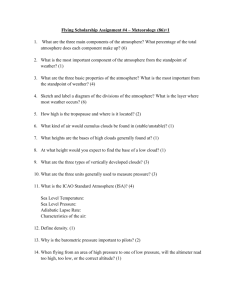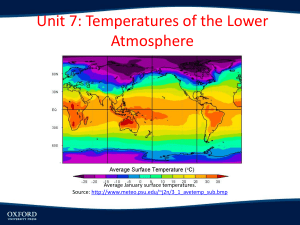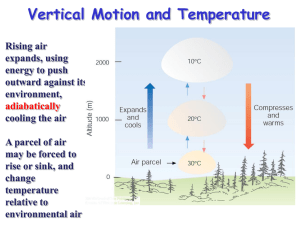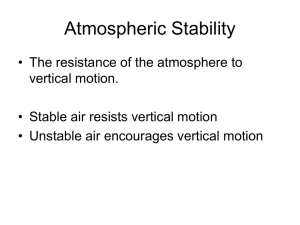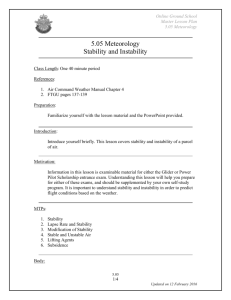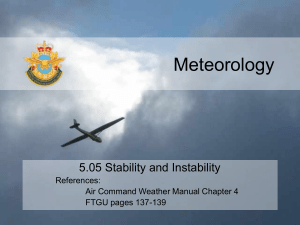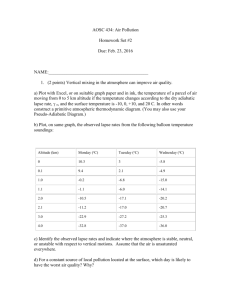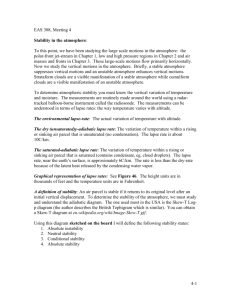Atmospheric Stability Activity
advertisement
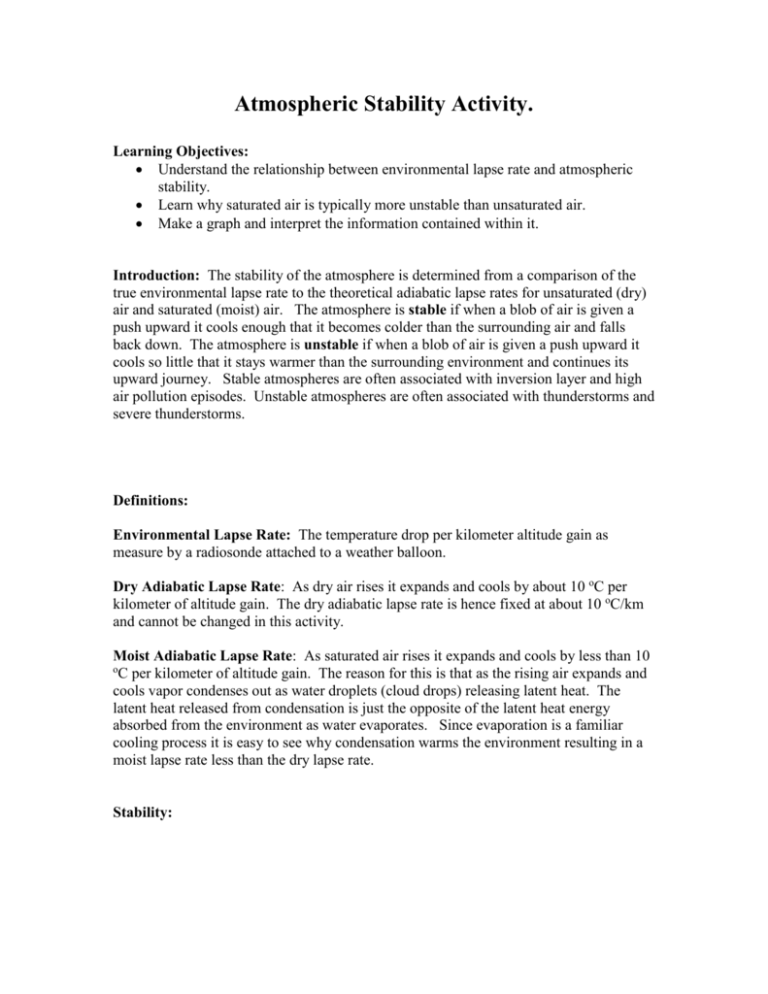
Atmospheric Stability Activity. Learning Objectives: Understand the relationship between environmental lapse rate and atmospheric stability. Learn why saturated air is typically more unstable than unsaturated air. Make a graph and interpret the information contained within it. Introduction: The stability of the atmosphere is determined from a comparison of the true environmental lapse rate to the theoretical adiabatic lapse rates for unsaturated (dry) air and saturated (moist) air. The atmosphere is stable if when a blob of air is given a push upward it cools enough that it becomes colder than the surrounding air and falls back down. The atmosphere is unstable if when a blob of air is given a push upward it cools so little that it stays warmer than the surrounding environment and continues its upward journey. Stable atmospheres are often associated with inversion layer and high air pollution episodes. Unstable atmospheres are often associated with thunderstorms and severe thunderstorms. Definitions: Environmental Lapse Rate: The temperature drop per kilometer altitude gain as measure by a radiosonde attached to a weather balloon. Dry Adiabatic Lapse Rate: As dry air rises it expands and cools by about 10 oC per kilometer of altitude gain. The dry adiabatic lapse rate is hence fixed at about 10 oC/km and cannot be changed in this activity. Moist Adiabatic Lapse Rate: As saturated air rises it expands and cools by less than 10 o C per kilometer of altitude gain. The reason for this is that as the rising air expands and cools vapor condenses out as water droplets (cloud drops) releasing latent heat. The latent heat released from condensation is just the opposite of the latent heat energy absorbed from the environment as water evaporates. Since evaporation is a familiar cooling process it is easy to see why condensation warms the environment resulting in a moist lapse rate less than the dry lapse rate. Stability: Part 1. Moist Lapse Rate. Objective: Learn how the moist adiabatic lapse rate depends on temperature. Go to the page: http://cs.clark.edu/~mac/Geol390/physlets/Stability/physics203.html Click on the Moist Lapse Rate (MLR) button and use the calculator to calculate the moist lapse rate for air temperatures from -80 oC to +40 oC and fill in the table below. T (C) -80 -60 -40 -20 -10 0 10 20 30 40 MLR C/km Graph your results on the axes below. For the answers below note that the dry lapse rate is actually 9.8 C/km. Question: For what temperature is the moist lapse rate closest to the dry lapse rate? Explain: Question: For what temperature is the moist lapse rate smallest? Explain. Question: Can the moist lapse rate ever be larger than the dry lapse rate? Explain: Question: For what average air temperature is the moist lapse rate 6 oC/km? Part 2. Dry air and saturated air. Click the Dry check box, set the surface temperature slider to 20 oC, and the Environmental Lapse rate to -7 oC/km. Click Start. Carefully observe the simulation. Does the rising dry air cool down as expected based on the definitions given in the introduction? Explain. What happens to the size of the dry air blob as it rises? Explain why this is physically reasonable. What is the temperature of the dry air blob at 3 km? _________ What is the temperature of the environment at 3 km? _________ Since air density is inversely proportional to temperature, warm air surround by cooler air will rise and cold air surrounded by warmer air will sink. With this in mind, will the dry blob tend to sink back down or continue to rise? When the environmental lapse rate is 7 oC/km is the atmosphere stable or unstable for rising dry air? Click the reset button and set Environmental Lapse rate to -12 oC/km. The dry box shold still be checked. Click Start.

